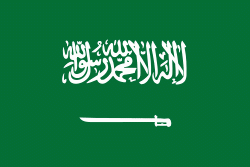Jizan Region (Jazan Region)
The region includes over 100 islands in the Red Sea. Jazan Economic City is a mega project that is planned to boost the economy of the region and make it part of the Saudi economic growth. The Farasan Islands, Saudi Arabia's first conservation protected area, is home to migratory birds from Europe in winter.
The region divides into three parts.
* The Al-Sarawat mountains inland, which rise to about 3,000 metres.
* The Alhazoun forest district consists of forest broken by some areas of rich pasture.
* The plains are noted for the production of coffee beans, cereal grain crops (barley, millet and wheat) and fruit (apples, bananas, grapes, mangoes, papayas, plums and citrus varieties).
Though the climate on the highlands is similar to the relatively wetter climate of 'Asir, the coastal regions of Jizan province are part of Tihamah, probably the hottest place in the country, with mean maximum temperatures ranging from 40 °C (104 °F) in July to 31 °C (88 °F) in January. High humidity from coastal lagoons makes the climate even less bearable than it would be otherwise. Rainfall is extremely low at less than 75 millimetres (3 inches) per year. Sabya is located in the center between the mountain and the beach.
Map - Jizan Region (Jazan Region)
Map
Country - Saudi_Arabia
 |
 |
| Flag of Saudi Arabia | |
Pre-Islamic Arabia, the territory that constitutes modern-day Saudi Arabia, was the site of several ancient cultures and civilizations; the prehistory of Saudi Arabia shows some of the earliest traces of human activity in the world. The world's second-largest religion, Islam, emerged in what is now Saudi Arabia. In the early 7th century, the Islamic prophet Muhammad united the population of Arabian Peninsula and created a single Islamic religious polity. Following his death in 632, his followers rapidly expanded the territory under Muslim rule beyond Arabia, conquering huge and unprecedented swathes of territory (from the Iberian Peninsula in the west to parts of Central and South Asia in the east) in a matter of decades. Arab dynasties originating from modern-day Saudi Arabia founded the Rashidun (632–661), Umayyad (661–750), Abbasid (750–1517), and Fatimid (909–1171) caliphates, as well as numerous other dynasties in Asia, Africa, and Europe.
Currency / Language
| ISO | Currency | Symbol | Significant figures |
|---|---|---|---|
| SAR | Saudi riyal | رس | 2 |
| ISO | Language |
|---|---|
| AR | Arabic language |















